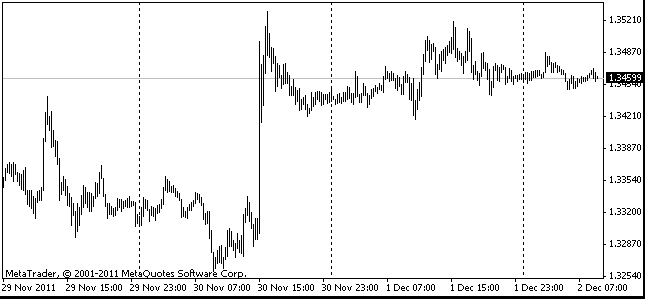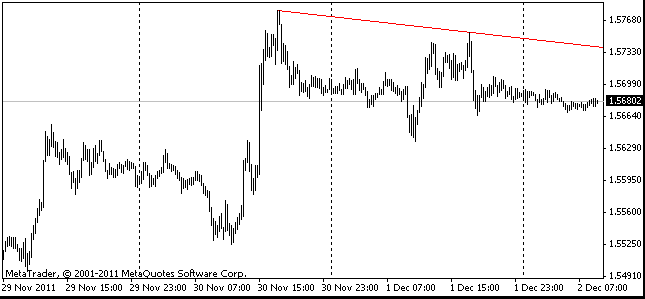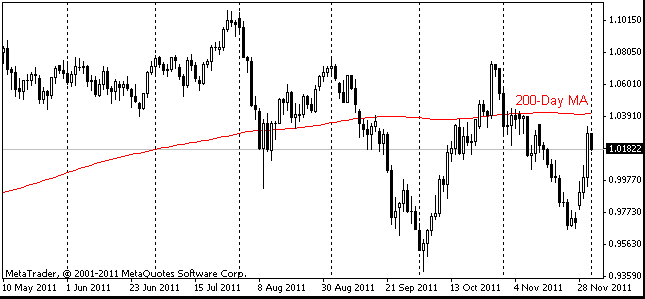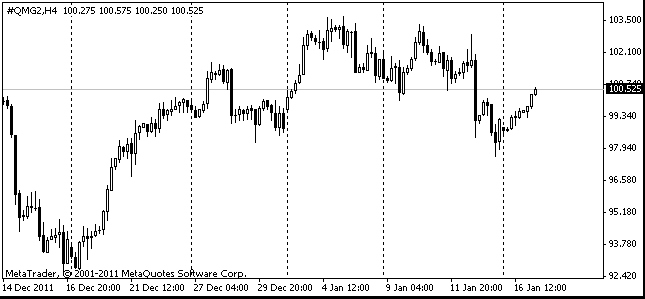EUR/USD
The famous market commentator, Mark Hulbert, has written a warning article, where he pointed out that yesterday's decline of the American exchanges could be the start of a fundamental reversal. As an example he cited the fact that the bullish market of 2000s came into existence right on September 9, 2002. And the decline of 2007 started on October 9. It is creepy to think about the strict periodicity of these events – exactly 5 years. And it's been just 5 years since 2007. On the one hand, the American markets have enough space for a fall, as they are rather close to the historical highs, though the state of affairs in the country is far from ideal. This is proved by the corporate reports in the third quarter. If we leave aside the mysticism of Hulbert, it was exactly for the poor reports that the stocks declined and the dollar again came into demand. By the end of the day EUR/USD had dropped below 1.29 and now trading is held around 1.2850. Yesterday there was an interesting sharp move in the pair by 70 pips to 1.29. Some attribute this to the invalid bund/bono spread, published by Bloomberg, others put the blame for selling of the euro on draghi, who in his speech pointed out poor economic forecasts for the euro zone. The former was a short-term mistake and the latter is a long-known fact. Yet the euro failed to recover. It means that the mistake isn't the point, the bears are simply looking for a reason to launch an attack. However, all this is happening on the periphery of the market and with low volumes. The main attention is riveted on Spain. Even benevolence of Merkel to Greece, which almost guaranteed the issue of a new tranche, didn't produce any impact on the market sentiment. The same with the news that Troika is satisfied with the progress of Portugal and is ready to allocate money to it – it also didn't change the market landscape. Formally, the situation in Europe is getting better, however you wouldn't say it by the market performance.

GBP/USD
Hardly had we mentioned yesterday that the sterling felt worse than the euro when the situation changed profoundly. Selling of the euro, which lasted almost all day long yesterday, had little effect on the pound. We clearly see the struggle for 1.60 in GBP/USD, yet EUR/GBP has fallen from 0.81 to 0.8030. The good performance of the sterling is largely connected with expectations of the positive economic results for the third quarter. NIESR calculated that over the three months, ending in September, the economy grew by 0.8%. Such pace of growth was last seen only two years ago. Eventually, it is a very sharp reversal in comparison with 0.1%, which was the result for the three months, ending in August.

AUD/USD
aussie-bulls are trying their hardest to turn the situation in their favour, as they did in July and September. AUD/USD enjoyed a good demand on the drop below 1.02. The same result has been produced by steady purchases this week. Pay your attention to the fact that the Aussie has been purchased over the last 24 hours despite the decline of the stock markets and selling of gold. Most likely, the wealth funds have again joined the game, diversifying their reserves with Australian dollars, which can bring profit not only due to the strength of the economy, but also due to the nonzero interest rate.

oil
The heat around Syria and Turkey has pushed the Oil rates up. brent grew by about 2.5% yesterday, now being priced at over $114 per barrel. WTI performed the same growth (and this is already less connected with the geopolitics). It is remarkable that the purchases here were running on large volumes, while in other markets trading was slack. Have the players finally started to build QE3 into the rates? Their speed deserves praise – less than a month.
